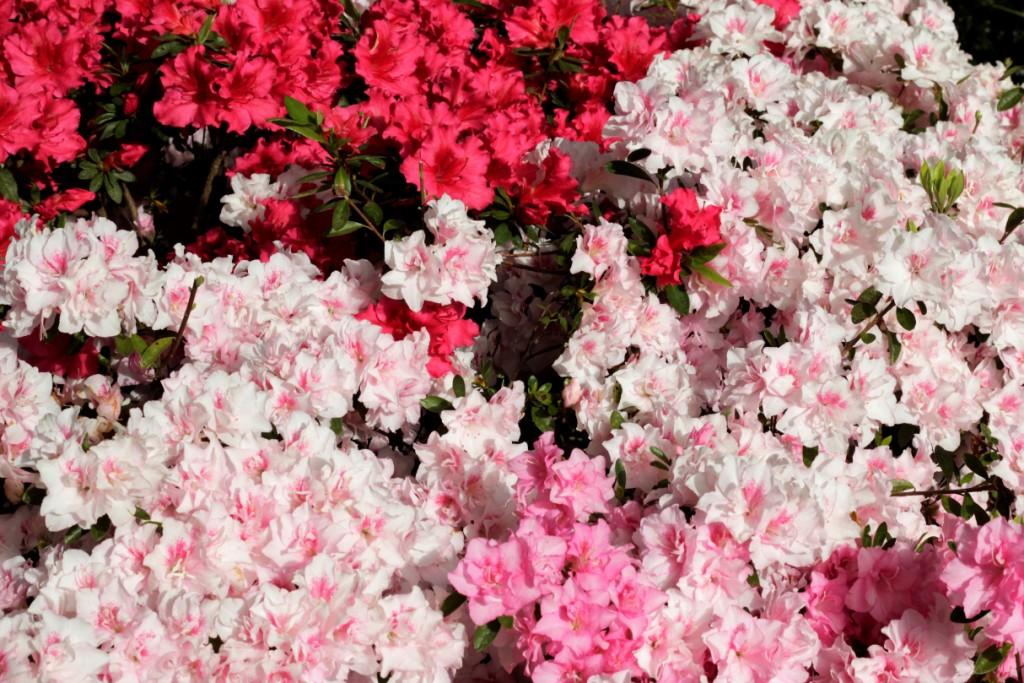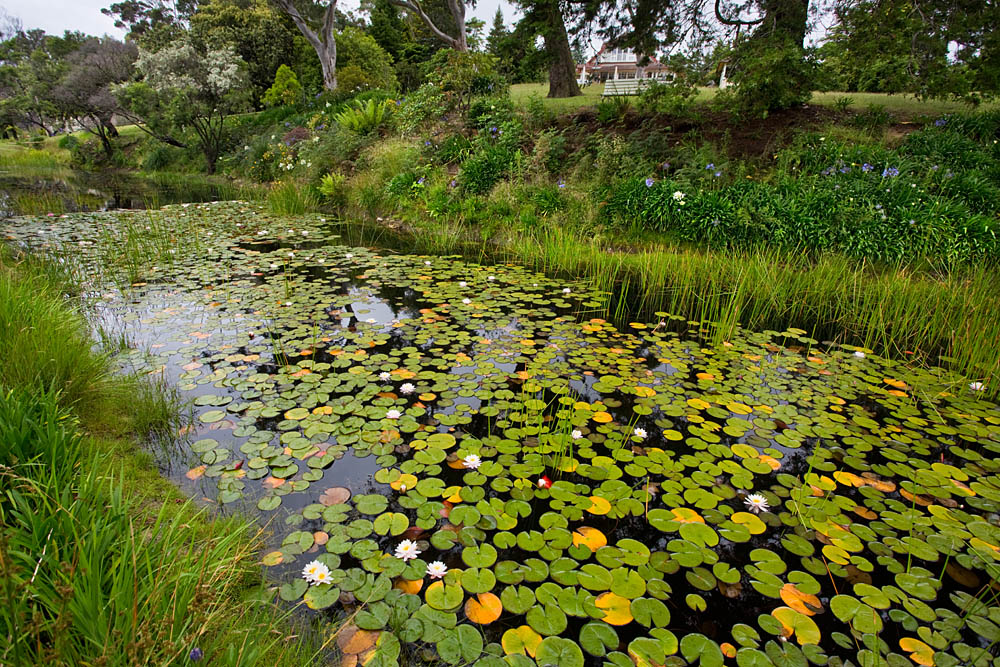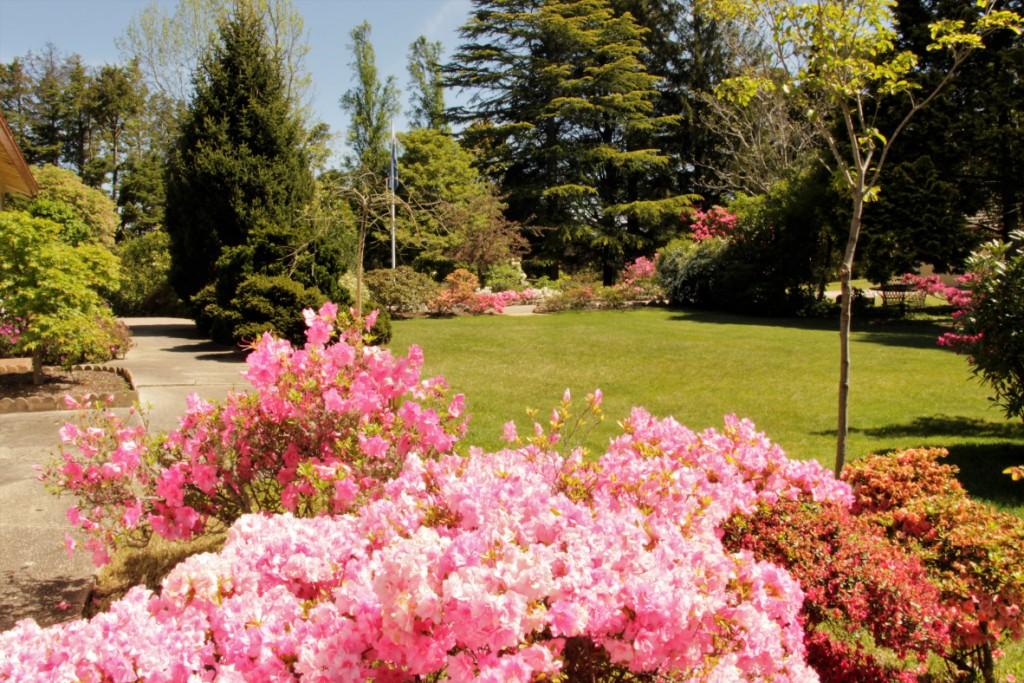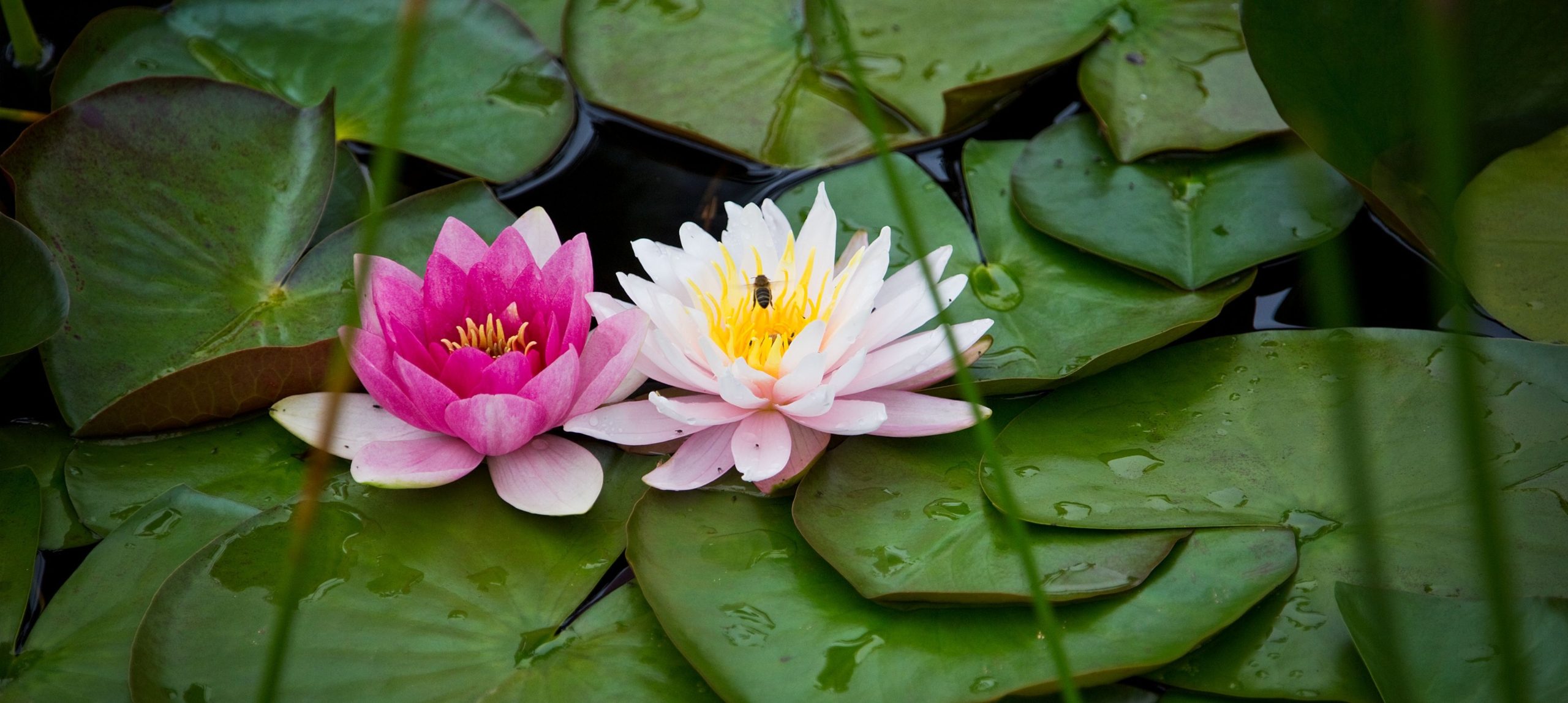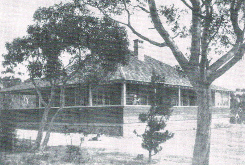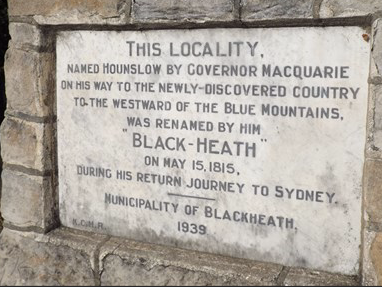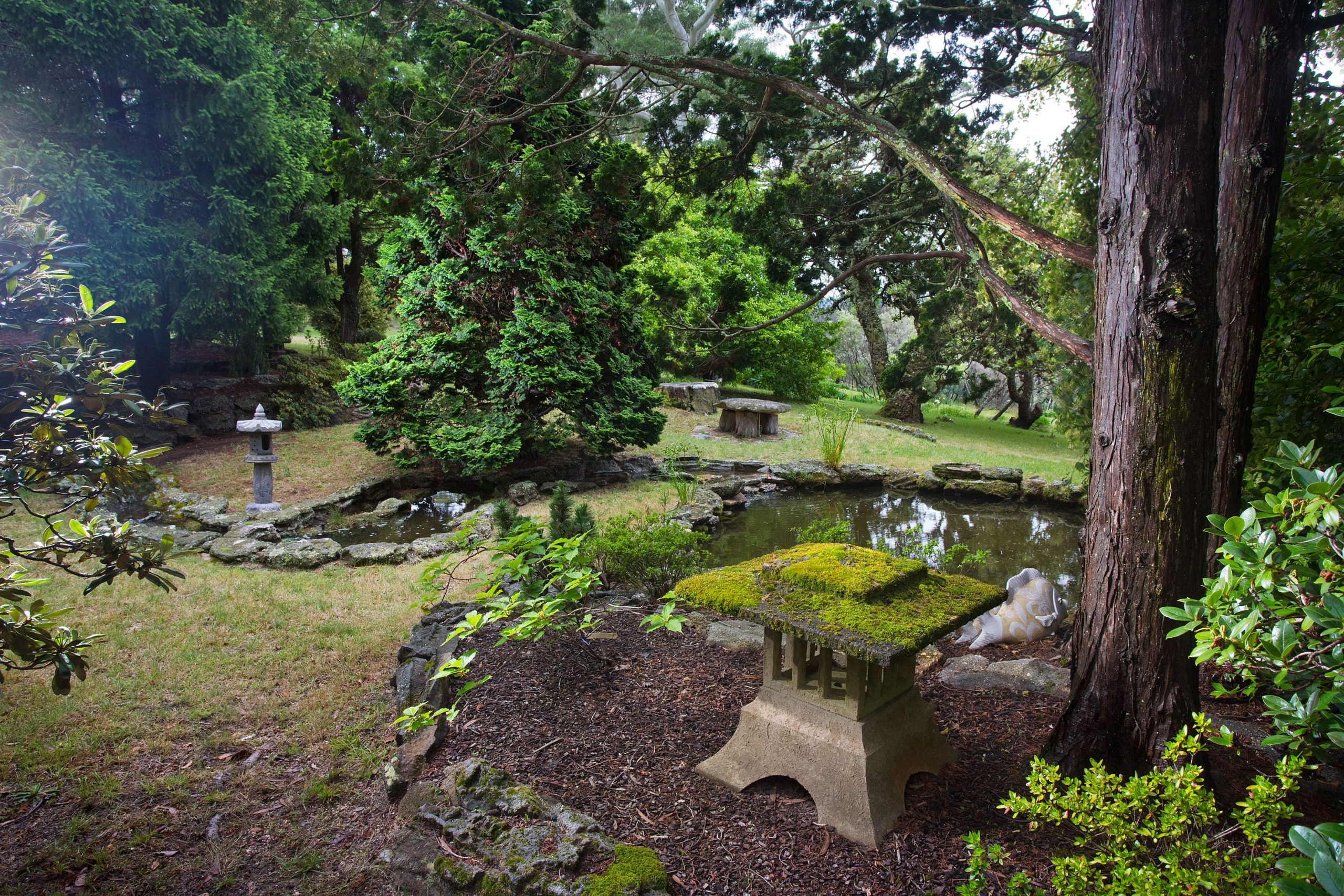
The Garden
The garden at ‘Mount Booralee’ is of high aesthetic significance at a local level for its integration of cool climate ornamental plants with local retained species, particularly ancient Old Man Banksias (Banksia serrata) and Scribbly Gum (Eucalyptus haemastoma) that reflects both its early establishment as a bush reserve in the 1880s and its development in the 1940s and 1950s according to the philosophy of its principal creator Edward Hill for an informal ‘English/Australian’ garden.
The extensive planting of native and exotic plants combined with natural bushland and important modified natural features, such as the Summit and the rock overhang, are of substantial local significance.
A large sweeping gravel drive through ornate iron gates and gate posts leads to the house from Hat Hill Road. The property consists of ten acres of formal garden and ten of native bushland.
The principal ornamental garden features conifers, magnolias, camelias. rhododendrons and azaleas, which lie on either side of the main drive between the house and the road.
To the side of the house, there is a large lawn area with ornamental plantings of exotic species, including a large standard Weeping Cherry (Prunus sp.). The land slopes away from the house toward a large ornamental pond, the banks of which are planted with Tulip Trees (Liriodendron tulipifera). Old Man Banksias (Banksia serrata) on the slope between the house and the lake.
The Mount Booralee garden is seen at its best during spring (September – November) when it comes alive with a profusion of colour. In the larger garden, rhododendrons, azaleas, camelias, magnolias, flowering cherries and flowering pears provide spectacular colour. Proteas, bottle brush and red and white waratah add native colour.
In the more intimate gardens surrounding the house, peonies, lavender, daphnie, rosemary, iris, daffodil, tulips and hellebores add colour and perfume.
The rose garden is a blaze of colour during October and November.
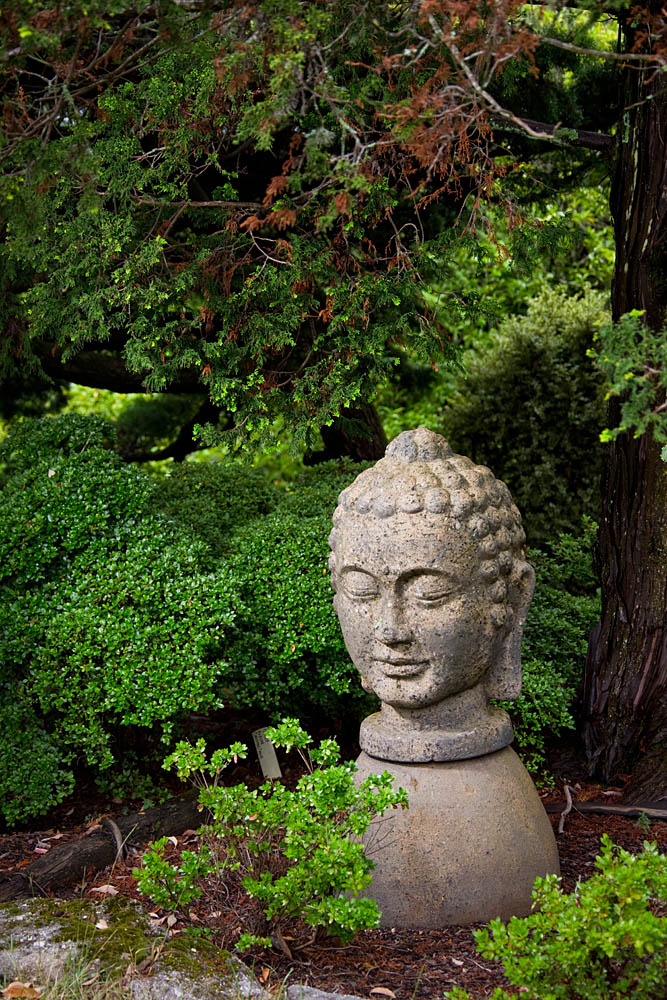
Autumn is also a magical time in the Booralee garden when the deciduous trees take on their autumn hue. The Japanese maples, ornamental pear and cherry trees, the mulberry and elm provide a spectacular display of autumn colour.
Unfortunately, the losses incurred during the 2019 bushfire included a row of ten, large, sixty-year-old rhododendron trees along the Hat Hill fence line and many exotic native species in the south western corner of the property. The owners have cleared this land and now plan extensive restoration and replanting.
Special Features
1. The Summit
The hill climbed by Douglass McMinn in 1881 and from which he fell in love with the surrounding area, is now called “The Summit”, and is the highest point on Mount Booralee. A direction plate on top of The Summit indicates a height of 3,450ft (1052m) above sea level.
The Summit is accessed by a number of walking paths. From this high point there are extensive views over the garden and vast panoramic views to Hat Hill, Mount Victoria, Mount Hay and beyond. The Summit is a great spot from which to enjoy spectacular sun rises and sun sets. “Sundowners” is always popular.
0 reviews
2. The Rock Overhang
Carved by water and wind, the rock overhang is located on the northern side of the summit. It offers wonderful views to the north over the Grosse valley towards Mount Wilson.
0 reviews
3. The Lily Pond
Home to our resident family of wood ducks, the Lily Pond is an artificial pond containing five and a-half million litres of clear spring water fed by natural run-off from The Summit and the southern area of the garden.
The Lily Pond is so named for the water lilies which grow there. These provide a wonderful display in the summer months. The banks of the Lily Pond have been planted with agapanthus plants to prevent soil erosion, plus cool climate shrubs and trees.
Unfortunately, the 2019 bushfire significantly impacted the Lily Pond and its surroundings. Eight large tulip trees planted along the northern bank were severely burnt and whilst for the time being, they remain in situ, most are not expected to survive and will need to be removed. The fire also destroyed many native trees surrounding the Lily pond including Banksias and eucalypts.
0 reviews
4. The Oriental Garden
Originally a water feature developed my Edward Hill in the 1950’s, this section of the garden suffered significant deterioration due to neglect and over-growth.
The current owners have restored the four ponds and waterfall to their original state and are in the process of planting the area as an oriental garden with various species of Asian origin.
The Oriental garden is excellent as a place for quiet meditation and relaxation.
0 reviews
5. The Rose Pleasance
The Rose Pleasance was planted by Alf Milani in the early 1990’s and contains over 100 old and rare specimens. Partly destroyed by fire, the pleasance fence and a number of rose bushes have been replaced.
0 reviews
